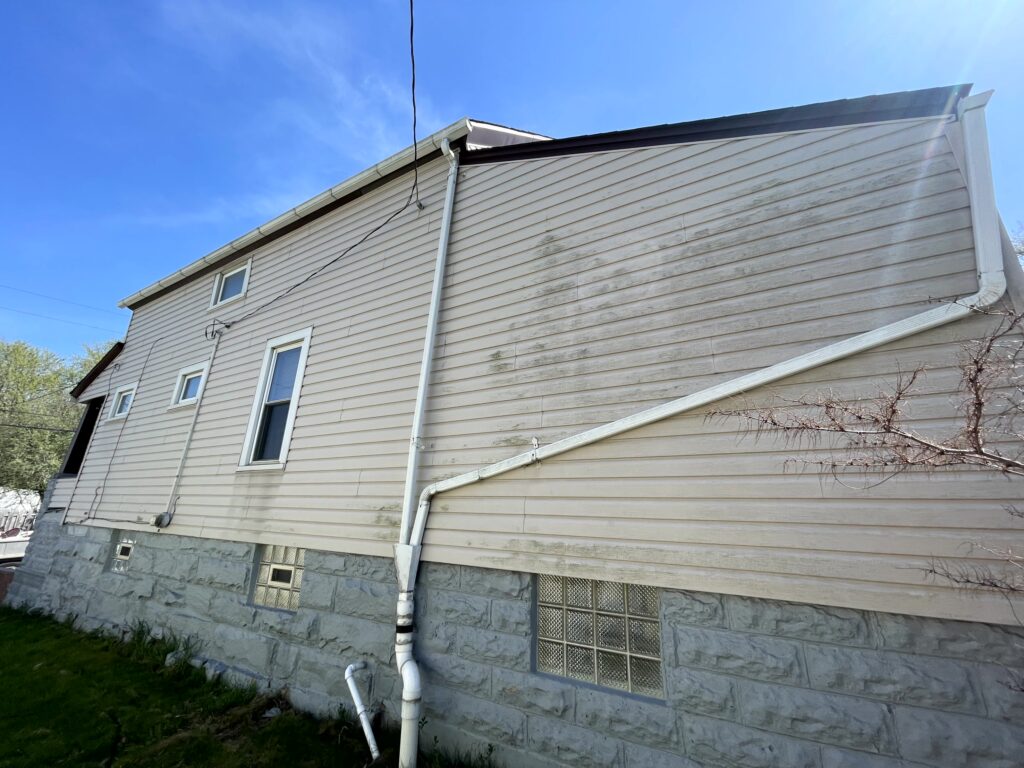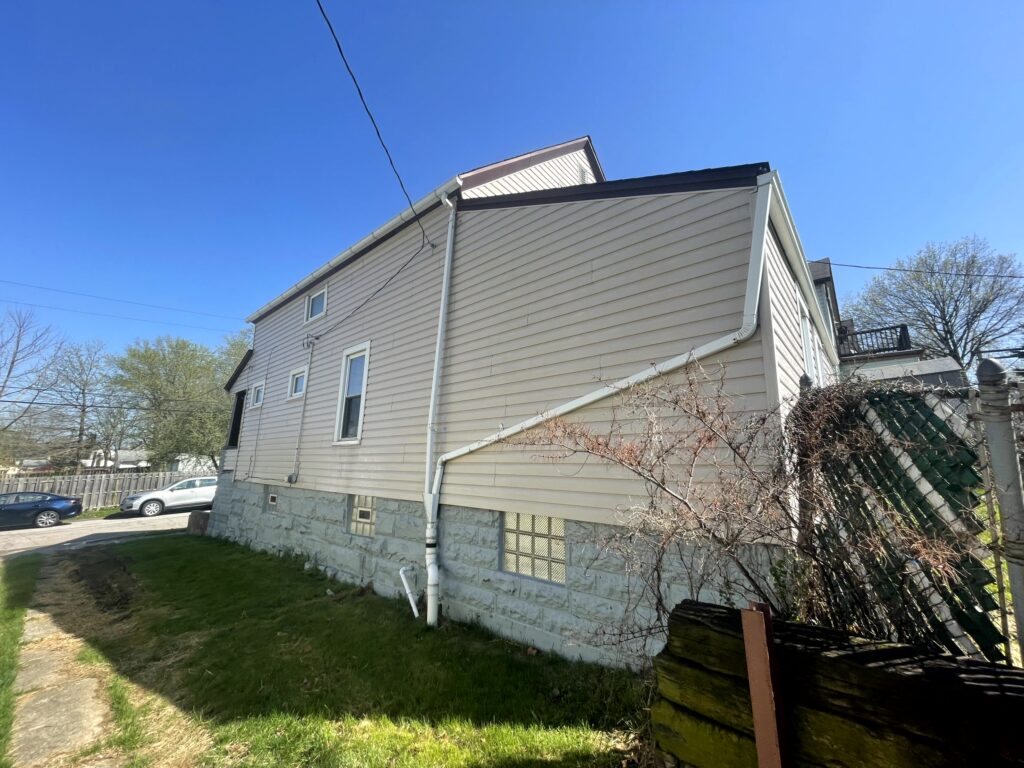Understanding the Soft Wash Technique: A Comprehensive Guide to Exterior Cleaning


In the realm of property maintenance and restoration, the soft wash method has emerged as a game-changer, offering a delicate yet remarkably effective approach to cleaning various surfaces. Unlike the brute force of pressure washing, soft washing relies on a sophisticated blend of detergents, low-pressure water, and precise techniques to tackle dirt, grime, mold, and other unsightly contaminants. In this extensive guide, we’ll embark on a journey to uncover the intricate details of soft washing, its key components, myriad benefits, versatile applications, and why it’s increasingly becoming the preferred choice for conscientious property owners and professional cleaners alike.
Understanding Soft Wash
Soft wash, at its core, represents a nuanced cleaning technique that prioritizes the synergy between specialized cleaning solutions and gentle water pressure to achieve optimal results. Unlike conventional pressure washing, which relies solely on sheer force to dislodge and remove surface contaminants, soft washing operates on the principle of chemical action. The process involves the meticulous application of eco-friendly cleaning solutions, meticulously formulated to target specific types of stains and organic matter, followed by a rinse using low-pressure water to gently wash away the dissolved debris.
Key Components of Soft Wash:
Cleaning Solutions: The cornerstone of soft washing lies in the selection and application of high-quality cleaning solutions. These solutions typically contain a blend of surfactants, detergents, sanitizers, and mildewcides carefully calibrated to tackle a spectrum of contaminants, including algae, mold, mildew, pollen, dirt, and grease. By harnessing the chemical properties of these specialized formulations, you can effectively break down and emulsify stubborn stains without causing harm to the underlying surfaces.
Low-Pressure Water Systems: Unlike the high-pressure jets employed in traditional pressure washing, soft wash systems utilize low-pressure water delivery mechanisms to disperse the cleaning solutions evenly across the target surface. This gentle approach minimizes the risk of surface damage while ensuring thorough coverage and penetration of the cleaning agents. Whether powered by electric pumps, gas-powered engines, or integrated into portable backpack sprayers, the controlled flow of water in soft washing facilitates precise application and superior results.
Specialized Applicators and Tools: Soft washing often involves the use of specialized applicators and tools designed to optimize the efficiency and effectiveness of the cleaning process. These may include handheld sprayers, telescopic wands, surface cleaners, and custom nozzles tailored to specific cleaning tasks and surface types. By leveraging the right combination of equipment and techniques, we can navigate intricate architectural features, reach elevated surfaces, and achieve consistent results across diverse substrates.
Benefits of Soft Wash:
Gentle Yet Effective Cleaning: One of the primary advantages of soft washing is its ability to deliver deep, thorough cleaning without subjecting surfaces to the harsh abrasion and potential damage associated with high-pressure washing. By relying on the chemical potency of specialized detergents and the controlled force of low-pressure water, we can achieve exceptional results on delicate materials such as vinyl siding, wood, stucco, painted surfaces, and delicate landscaping features.
Prevents Damage and Surface Degradation: Unlike pressure washing, which can strip away paint, erode surfaces, and cause irreversible damage to sensitive materials, soft washing offers a gentle alternative that preserves the integrity and longevity of exterior surfaces. Whether rejuvenating the facade of a historic building, revitalizing a weathered roof, or refreshing a wooden deck, soft wash techniques minimize the risk of structural compromise, surface degradation, and costly repairs.
Long-lasting Results and Preventative Maintenance: Soft washing not only removes visible contaminants but also addresses underlying issues such as mold, mildew, algae, and bacterial growth at their source. By penetrating deep into porous surfaces and eliminating spores, soft wash treatments provide long-lasting protection against future infestations and discoloration. This proactive approach to maintenance helps property owners extend the lifespan of their investments, enhance curb appeal, and reduce the frequency of cleaning cycles over time.
Environmental Sustainability: Many of the cleaning solutions used in soft washing are biodegradable, eco-friendly, and compliant with environmental regulations. By minimizing the use of harsh chemicals and reducing water consumption through low-pressure techniques, we can minimize their ecological footprint while delivering superior cleaning results. Additionally, the targeted nature of soft washing helps protect surrounding vegetation, aquatic ecosystems, and sensitive habitats from potential harm.
Applications of Soft Wash:
The versatility of soft wash techniques extends across a diverse array of residential, commercial, industrial, and institutional settings, including but not limited to:
Residential Properties: Soft washing is ideal for cleaning and maintaining various exterior surfaces found in residential settings, including vinyl siding, brickwork, wooden decks, concrete driveways, roofs, awnings, fences, and outdoor furniture. Whether restoring the luster of a neglected facade or preparing surfaces for painting or refinishing, soft wash treatments can rejuvenate curb appeal and enhance the overall aesthetics of residential properties.
Commercial Buildings and Facilities: From office complexes and retail storefronts to hospitality establishments and recreational facilities, soft washing offers a safe, effective, and non-disruptive solution for exterior maintenance. Whether removing graffiti, eradicating mold and mildew, or restoring the cleanliness of parking lots and walkways, soft wash techniques help businesses create a positive impression on customers, tenants, and visitors while protecting their physical assets and investments.
Industrial Structures and Equipment: Soft washing plays a crucial role in the maintenance and upkeep of industrial facilities, manufacturing plants, warehouses, and storage facilities. Whether cleaning exterior surfaces, equipment, machinery, or storage tanks, soft wash techniques can remove accumulated dirt, grease, rust, and industrial residues without causing damage or contamination. By promoting a clean and safe working environment, soft washing helps improve operational efficiency, compliance with regulatory standards, and employee morale.
Institutional and Public Spaces: Educational institutions, healthcare facilities, government buildings, and public amenities benefit from the application of soft wash techniques to preserve cleanliness, hygiene, and aesthetics. Whether sanitizing playground equipment, disinfecting public restrooms, or removing graffiti from exterior surfaces, soft washing helps create a safe, inviting, and well-maintained environment for students, patients, employees, and visitors.
In conclusion, the evolution of soft wash represents a paradigm shift in the field of exterior cleaning, offering a harmonious balance between efficiency, safety, and environmental responsibility. By harnessing the power of specialized detergents, low-pressure water systems, and advanced techniques, soft washing delivers unparalleled results across a diverse spectrum of applications, from residential properties and commercial buildings to industrial facilities and public spaces. Whether addressing routine maintenance needs, remedying specific cleaning challenges, or safeguarding property investments against the ravages of time and weather, soft wash techniques offer a versatile and sustainable solution for property owners, managers, and cleaning professionals alike. As we continue to embrace the gentle power of soft wash, we pave the way for cleaner, healthier, and more vibrant communities, where the beauty and integrity of our built environment are preserved for generations to come.
